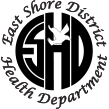Avian Flu H5N1 Feb. 2025
Overview
Highly Pathogenic Avian Influenza (HPAI), also referred to as H5N1 or commonly “bird flu,” is a virus that is widespread in wild birds worldwide. It is currently causing outbreaks nationally in poultry and U.S. dairy cows with several recent human cases in U.S. dairy and poultry workers. While the current public human health risk is low, the federal Centers for Disease Control and Prevention (CDC) is watching the situation carefully. In Connecticut, CT DEEP, CT DoAg, and CT DPH monitor for HPAI.
Wild Birds and Other Wild Animals (CT DEEP)
The DEEP Wildlife Division and The USDA Animal and Plant Health Inspection Service (APHIS) have been conducting targeted surveillance for HPAI since 2006. DEEP Biologists test a sample of waterfowl in summer and winter during normal banding and research projects. They also do testing on certain bird mortality events if AI is suspected and for monitoring in raccoons, foxes, bobcats, and other mammals.
If you see several dead birds (>5) in one location or notice that several dead birds in the same area over the course of several days, we encourage you to report it. Not all birds will be collected or tested, but reporting is still critical. If you observe this type of die-off, in addition to filling out this form, please call the DEEP Wildlife Division at 860-424-3011.
Poultry, Livestock, and Domestic Animals (CT DoAg)
POULTRY
HPAI is highly contagious and fatal for domestic poultry, with no approved vaccine/effective treatment.
• Spread occurs through bird-to-bird contact or contaminated surfaces.
• Biosecurity practices are essential:
– Prevent contact with wild waterfowl.
– Limit access, disinfect clothing, shoes, and equipment.
– Avoid borrowing equipment from other farms.
– Cooking eggs and poultry to an internal temperature of 165°˚F kills bacteria and viruses, including avian influenza A viruses.
– Separate uncooked (raw) poultry from cooked foods and foods that won’t be cooked.
To report sick birds, unexplained high number of deaths, sudden drop in egg production, or sudden reduction in feed or water intake, contact the State Veterinarian at 860-713-2505 or ctstate.vet@ct.gov or the USDA at 866-536-7593.
DAIRY CATTLE
• H5N1 was detected in U.S. dairy herds starting in March 2024; no confirmed cases in CT.
• Symptoms include reduced milk production, lethargy, and dehydration.
• Good biosecurity practices are key to preventing spread.
Farm or processing employees should wear PPE when working with or around cattle and raw milk that are suspected or confirmed with H5N1. Commercial milk supply remains safe due to pasteurization which has been proven to kill harmful bacteria and viruses
To report ill dairy cattle, contact your veterinarian, the State Veterinarian at 860-713-2505 or ctstate.vet@ct.gov or the USDA APHIS Area Veterinarian in Charge, Bradley.Keough@usda.gov or 508-363-2290.
HUMAN INFECTION BACKGROUND
• No confirmed detections in people or livestock in CT.
• Human H5N1 infections reported in the U.S. since spring 2024.
• Most human infections are associated with exposures to infected poultry or dairy cattle.
• Some human infections have occurred in people with no known contact with animals.
Most U.S. individuals with H5N1 infection experienced mild illnesses. Symptoms include conjunctivitis (pink eye) or upper respiratory infections.
In January 2025, Louisiana reported the first human H5N1 death in a person who was exposed to infected birds.
